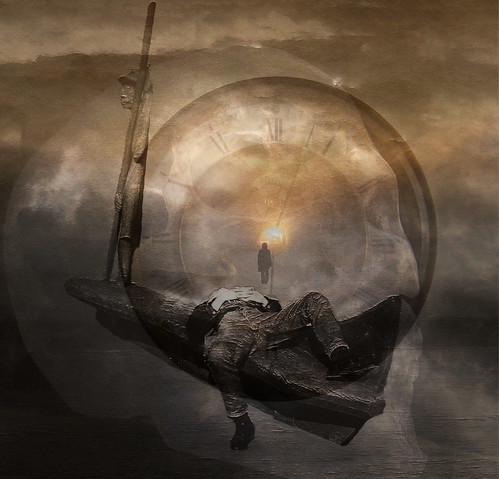
A number of good pieces on Snapchat have already been written, on this blog and others, and I think there’s a lot yet to talk about. I’m jumping on the bandwagon today because I think I see a conceptual area that’s already been touched on that offers additional room for expansion.
Much has been made of Snapchat’s inherent ephemerality, of the fact that its images are destroyed potentially seconds after they’re captured, that nothing is saved or made even semi-permanent. Jeremy Antley has noted that this introduces the possibility for different varieties of expression through technology, for changes to how we use social media for truth-telling. Nathan Jurgenson takes the ephemerality of Snapchat a step further and argues that just as photographs have traditionally been understood to capture a piece of the present and transport it into the future, the kinds of temporary photography that we see in Snapchat do pretty much the opposite, and that, moreover, we can understand this as a kind of reaction to the sort of documentation that social media has historically encouraged:
[A]s we have seen, there is meaning in witnessing ephemerality itself, an appreciation of impermanence for its own sake. By carving a space away from the growing necessity to record and collect life into database museums, temporary photography encourages an appreciation of the importance of experiencing the present for its own sake
In other words, temporary photography is doing something very interesting with time, and with our experience of the same. If we’ve traditionally understood photographs to be a fragment of the present experienced in the future, temporary photos are fragments of the present experienced as the present. The whole project of documentation is potentially thrown up for grabs.
To turn back to how photos have traditionally worked, I think this element of temporal transport is important to bear in mind before I go further. Photographs – indeed, I think all forms of documentation – are the technological means by which we capture elements of our present experience and remove them from what we experience as the linear timestream. This means that, as I’ve written before, photographs are fundamentally both time-laden and atemporal.
When I wrote that, I was also writing about ruined space, about the very contemplation of ruin. At this point it’s also important to note that ruin, at least for my purposes here, needn’t and shouldn’t be understood as confined to physical space. Documentation itself is always in a potential state of ruin, even as we imbue it with a – often illusory – element of permanence, or at least with the idea of significant future age. But different kinds of documentation have different relationships with ruin, and sometimes the ruin is the point, and sometimes it isn’t. Buddhist sand mandalas are created specifically to be destroyed, coupling a long and painstaking process of creation with a deep sense of the transience of all life. The process of making them is in itself a memento mori, a meditation on death. To return to photography, Susan Sontag put it beautifully when she argued that all photography was, in one way or another, about creating mementos mori:
To take a photograph is to participate in another person’s (or thing’s) mortality, vulnerability, mutability. Precisely by slicing out this moment and freezing it, all photographs testify to time’s relentless melt.
—On Photography (1973)
But the process of making these time-slices atemporal is just that: a process. And the result exists for a stretch of time, enough time that it can be meditated upon. They don’t simulate the experience of time flashing by us, or of us traveling forward through time at breathless speeds. They slow everything down, inviting us to pause and consider. Even ruin/decay art is about process, often slow process.
Snapchat has no process. At least not in that sense. The image’s destruction is instantaneous. There’s nothing to pause over. It’s there and then gone. Blink.
In short, what I’m arguing here is that temporary photography in general – and Snapchat in particular – is not only a reaction to traditional forms of social media self-presentation, not only a twist on where and how we place our trust, not only a twist on the abundance of documentation, but is a rethinking of what photography itself is and does, and, by extension, a rethinking of how we locate documentation within our experience of linear and alinear time. Photos have been atemporal; temporary photos are, by virtue of their emphemerality, deeply temporal. They’re not removed from time; instead they’re solidly located within it. They’re the present remaining the present.
It would be easy, then, to think that this kind of photography is incapable of serving as a memento mori. As I said above, Mementos mori have historically been artifacts with a long shelf life – architecture, photos, paintings, even clocks. They stick around. But I think temporary photography actually has the potential to serve as a new form of memento mori. Clocks that say tempus fugit on their faces aren’t in themselves reminders of the fleeting nature of time. The passing seconds do that. There and then gone again, temporary and instantly destroyed photos – because they are so temporal – may provide an even clearer sense of just how fast the present slips away.

Comments 2
Friday Roundup: February 15, 2013 » The Editors' Desk — February 15, 2013
[...] explores Snapchat in terms of time and trust, documents documentary drivers, and fights [...]
In Their Words » Cyborgology — February 24, 2013
[...] “temporary photography is doing something very interesting with time” [...]